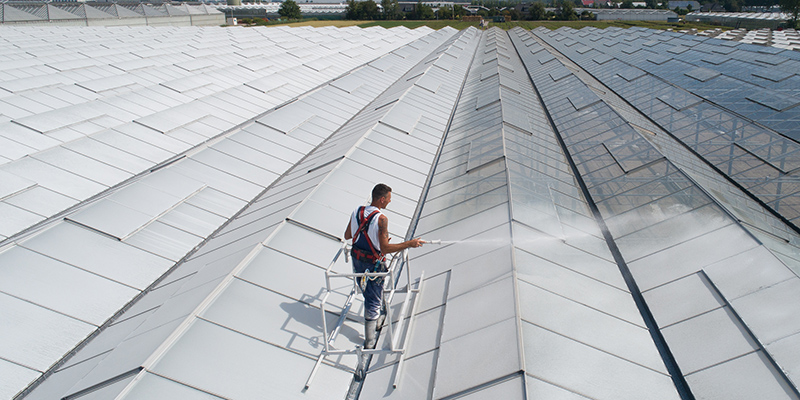What Are the Trade-offs of Dynamic Spectrum LEDs in Horticulture?
Many horticulture LED companies now offer dynamic or spectrum-tunable products. Rather than having fixed spectrums, the spectrums of dynamic spectrum LEDs can be modified by the operator with the aid of software providing spectrum libraries.
Dynamic LEDs are typically more expensive, either upfront or because of additional annual software fees. They also require substantially more electronics inside the luminaire and grow space, implying higher maintenance costs. Proponents argue that the return on investment is nonetheless positive because the ability to change the spectrum on a single LED gives growers the ability to always select the optimal spectrum for each crop, resulting in benefits like improved yields or plant characteristics like taste. Skeptics argue that the current science about the relationship between plant development and light characteristics implies dynamic spectrum LEDs are more likely to reduce a grower’s profits, and growers often misunderstand that the ability to change the spectrum comes at the expense of light intensity.
The goal of this article is to briefly summarize how dynamic spectrum lights work and the current science regarding the optimum plant spectrum, with the hope of helping growers make more intelligent adoption decisions.
The Appeal of Dynamic Spectrum LEDs
The specialty crop market is competitive. Growers are often looking for strategies to improve the quality of their product and their productivity through a more efficient use of inputs.
One of the benefits of LEDs is the ability to create new spectrums. Spectrum quality impacts both how a plant develops and the energy efficiency of producing light. For instance, red diodes produce light more energy efficiently than blue, so it is common to see spectrums with higher red quality.
LEDs can be designed with fixed or static spectrums, or they can be built with additional hardware and software to enable the spectrum to be changed by the grower, enabling tunable or dynamic spectrums. Dynamic spectrum LEDs have been touted to both improve plant quality, reduce costs, and future-proof farms. In fact, research does suggest that each crop and cultivar has an “optimum” spectrum that changes with the stage of plant development. So if a grower could make sure that the spectrum is always well-matched for the plant, this would likely create benefits like higher yields, better taste, or lower energy use.
Scientists’ Current Understanding of Spectrum
The challenge is that scientists’ understanding of the ideal spectrum is very limited and will likely be for years. Current research suggests that simply using an energy-efficient LED with a fixed white or broad spectrum is the most profitable strategy. For instance, Yang et al. (2023) asked whether using special LED lights with specific color combinations is better than just using regular “white” LEDs for eggplants. The white light was more balanced between red and blue (26% blue, 47% green, 24% red, and 2% far red). The other four spectrums had either higher or lower ratios of blue-to-red, and two had small quantities of UV. The researchers found the best crop performance on a total yield and yield per kWh was achieved with the white LED.
Nonetheless, it is very unlikely that this specific white spectrum is actually the optimal one for eggplants. It simply means it was the best of the five tested under those lab conditions for that cultivar of eggplants. There is an infinite number of other groups of spectrums the researchers could have compared. Also, the best-performing spectrum is going to change depending on the cultivar of eggplant. Moreover, changes in environmental factors such as humidity and temperature will also change how plants respond to light. For example, increasing the ratio of blue/red will trigger a plant’s stomata to open, increasing gas exchange, which in turn impacts plant development. But relative humidity also impacts the behavior of stomata. In other words, the ideal blue/red must be identified for every level of relative humidity
It is not accurate to say there is an optimal spectrum for a plant. Instead, there is an optimal spectrum for a specific cultivar grown under specific conditions. Imagine the time it is going to take to test all those combinations. The impact of a specific spectrum and interaction effects between the spectrum and other inputs and environmental factors are so vast that even with years of research, finding a one-size-fits-all spectrum is an almost Sisyphean task.
Practical Risks and Misconceptions
Though it will be years before we have a solid understanding of the spectrum, today we have a very strong understanding of the relationship between light intensity, yields, and plant health. There have been numerous replicated studies showing crop yields and light intensity are very closely linked up to a saturation point (Marcelis et al. 2006). In fact, for decades growers have used the 1% rule, which states that a 1% increase (or decrease) in light intensity increases (or decreases) yields by 1%.
This underlines a key risk associated with a common misunderstanding of how dynamic spectrum LEDs work. Many growers assume the amount of light (PPF) produced by a dynamic spectrum LED always equals the maximum PPF reported on the manufacturer’s product specification sheet. In other words, when they alter the spectrum, they assume the PPF stays the same, but in fact, it can decrease dramatically.
When designing a dynamic spectrum LED, the manufacturer starts by picking a single spectrum that produces the maximum PPF. Let’s assume it is 10% blue, 15% green, 70% red, 5% far red with a PPF of 1700 umols/second. But suppose the grower wants to get closer to the best-performing spectrum according to Yang et al. (2023), and so decides to increase the blue/red ratio from 0.29 to 0.50. To accomplish this, the LED does not provide more blue light. It instead reduces light from the red diodes. The result is a decrease of PPF by approximately 50% in this example. By the 1% rule, this would reduce yields by 50% as well. Moreover, we know that light deprivation also increases pathogen risk. The critical question is whether or not the expected impact on plant development of the change in spectrum will justify a 50% reduction of yields and increased pathogen risk? Given that plant scientists still know very little about how changes in spectrum impact profits, the answer is likely still “no” at this point.
The Future of Spectrum Research in Agriculture
Despite these challenges with dynamic spectrum LEDs for commercial use, the field of spectrum research is full of promise. Studies exploring the impact of light spectrum on nutritional content, physical appearance, and other plant characteristics are underway and making important discoveries, and spectrum-tunable LEDs may make it easier to do this research. But it is likely to be years before this research justifies translating into actionable, profitable strategies for growers. When that time comes, the optimal approach might still be to use efficient, fixed-spectrum LEDs designed for specific, proven light recipes rather than dynamic spectrum LEDs.
Today, dynamic spectrum LEDs, while intriguing, come with complexity and likely do not justify their high costs for commercial growers, in terms of cost and likely reductions in yields resulting from reduce light intensity. The road to understanding the intricate relationship between light spectrum, climate, and plant growth is long and winding. Until research provides clearer and more definitive guidance, growers might be better served by simply using efficient, low-cost, broad-spectrum lighting solutions.









